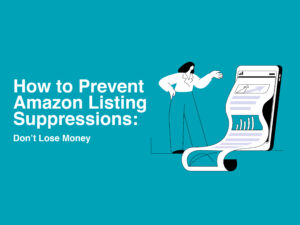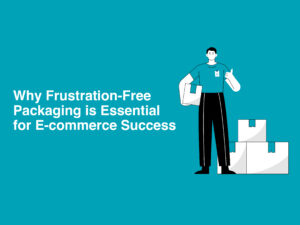At Scoop Global, we believe that understanding the nitty-gritty of various business models is the key to eCommerce success. Therefore, today, we’ll delve into the details of the Amazon Fulfilled By Merchant (FBM) method. Let’s unpack this method, compare it with its counterparts, and identify its advantages and limitations.
What is Amazon Fulfilled By Merchant (FBM)?
Amazon FBM is a powerful way for sellers to list products on Amazon and manage their own storage, packaging, shipping, and customer support. It provides more control over the entire fulfillment process, and it allows you to evade Amazon’s FBA seller fees, which can be as high as 30% of your product price.
| Features | Fulfilled By Merchant (FBM) | Fulfilled By Amazon (FBA) | Seller Fulfilled Prime (SFP) |
| Prime eligibility | No | Yes | Yes |
| Storage | Seller or 3PL | Amazon | Seller or 3PL |
| Returns | Seller (must follow Amazon standards) | Amazon | Seller |
| Customer service | Seller | Amazon | Seller |
| Shipping fees | Seller handles and pays | Amazon handles, bills the seller | Seller handles and pays |
| Performance metrics | None | None | Must pass the trial period and meet strict metrics |
How does Amazon FBM Work?
With Amazon FBM, you are in the driver’s seat. Once you’ve set up your seller account and created your Amazon product listings, you’ll handle orders, shipping, and customer service. The process is straightforward:
- Sign up for the seller account on Amazon.
- Create your Amazon product listing.
- Fulfill orders placed by customers.
- Pack and ship the products to your customers.
- Manage customer service and returns.
The two main types of seller accounts are individual and professional. The individual seller pays a $0.99 fee per sold item but does not pay a subscription fee. In contrast, the professional seller pays a $39.99 monthly subscription fee but is not charged per item sold. Every seller pays a referral fee on product sales.
Amazon FBM Fees
Professional sellers using Amazon FBM must account for a monthly subscription fee of $39.99 and an average referral fee of 15%. For those selling books or other media items, an additional closing fee of $1.80 per item is charged. On a brighter note, Amazon does not charge FBM sellers for storage, fulfilment, returns processing, long-term storage, or stock removal fees.
The Pros of Amazon FBM
Choosing Amazon FBM brings several benefits:
- Greater Control: As an FBM seller, you have complete command over the fulfilment process.
- Increased Margins: Without Amazon’s fulfilment fees, your profit margins may see a significant boost.
- Brand Enhancement: FBM allows you to use custom packaging, thus giving you an opportunity to enhance your brand visibility and reputation.
- Inventory Control: With FBM, you’re free from Amazon’s inventory restrictions.
The Cons of Amazon FBM
While FBM provides considerable benefits, it also has its limitations:
- No Prime Badge: As an FBM seller, you miss out on the Prime badge that often attracts more customers.
- Operational Load: With FBM, you’ll be handling fulfilment and returns, which can be time-consuming.
- Lower Conversion Rate: Lack of the Prime badge often leads to a lower conversion rate for FBM sellers.
Amazon FBM: When Should You Use It?
Amazon FBM can be particularly useful if your products are challenging or expensive to ship through FBA or if the fulfillment process is more cost-effective when managed in-house.
Amazon FBM Best Practices
To leverage the maximum benefits from Amazon FBM, here are some recommendations:
- Make use of Amazon’s ‘Buy Shipping’ feature.
- Provide tracking numbers promptly after creating a label.
- Ensure timely shipping for a better customer experience.
- Offer a clear and flexible return policy.
Wrapping Up
While Amazon FBM has its challenges, such as creating a cost-effective and efficient fulfilment system and selling at volume without the Prime badge, it can potentially offer higher profit margins. So, consider this option wisely and always have a backup plan to protect your business from supply chain disruptions.


